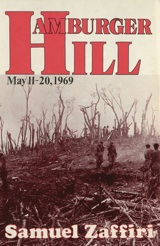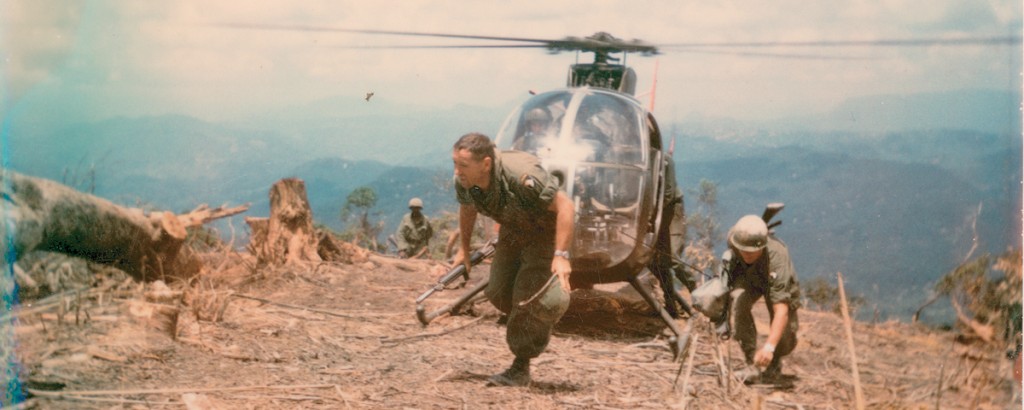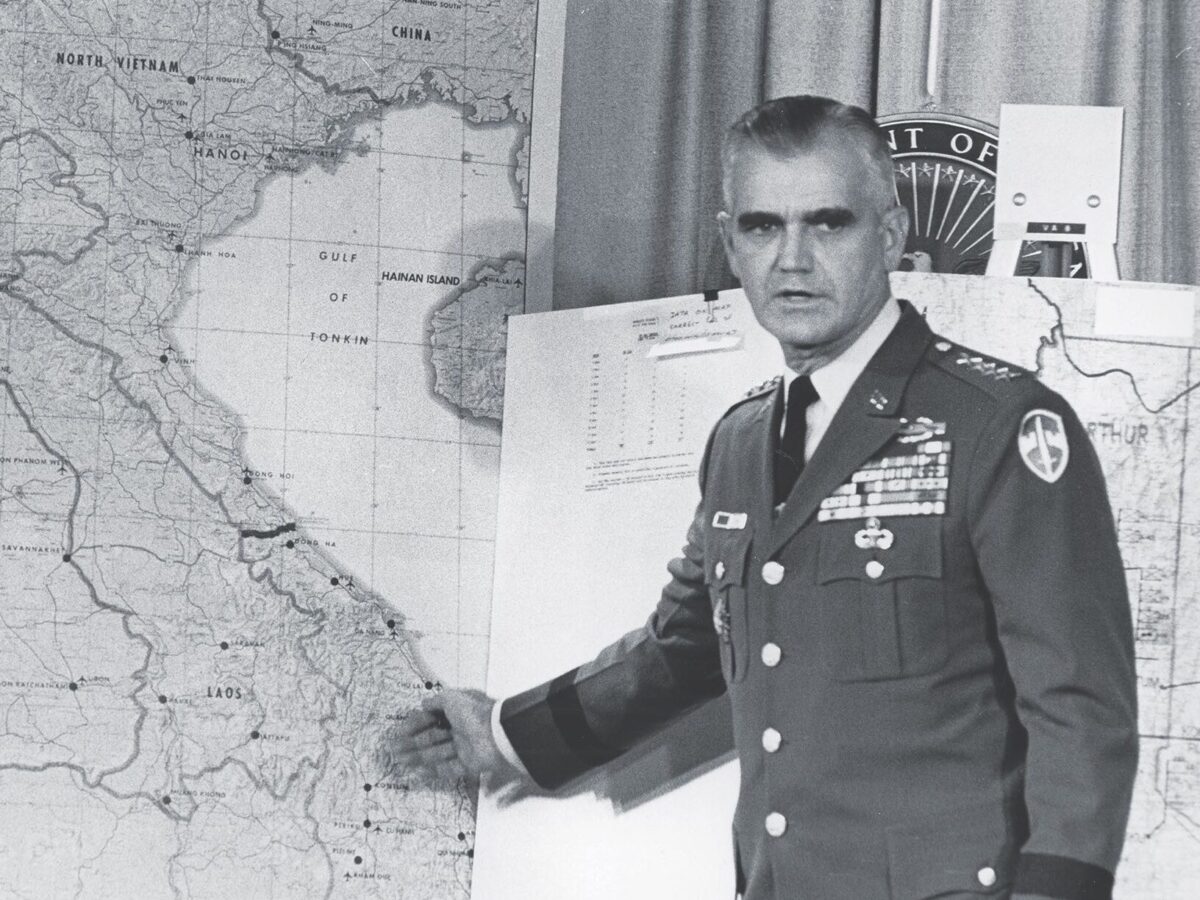 People often ask me how I came to write Hamburger Hill. It’s a long story, but oddly it’s a story that doesn’t begin on Hamburger Hill. The story begins instead on a 1st Infantry Division firebase called Oran. In early February 1969, the 1,000-man 101st NVA regiment launched a ground assault against Oran from two directions. My 4.2 mortar platoon, in which I was a charge cutter, spent the next five hours helping to blunt the enemy attack.
People often ask me how I came to write Hamburger Hill. It’s a long story, but oddly it’s a story that doesn’t begin on Hamburger Hill. The story begins instead on a 1st Infantry Division firebase called Oran. In early February 1969, the 1,000-man 101st NVA regiment launched a ground assault against Oran from two directions. My 4.2 mortar platoon, in which I was a charge cutter, spent the next five hours helping to blunt the enemy attack.
With my tape recorder running, I spent 10 days at Honeycutt’s Florida home, and got a thorough picture of all the decisions he and other commanders made during the fight.
Heavy fighting continued around Oran for the next week or two. When it ended, my platoon was flown to Lai Khe for a stand down. While there, fate, in a bizarre twist, set in motion a chain of events that would end with my publishing Hamburger Hill. One night while sleeping on a cot next to my mortar, a drunken soldier from my platoon, for reasons still unknown to me, suddenly attacked me and broke my jaw in two places, requiring surgery. I was at an Army hospital in Japan recovering from surgery on May 10, when the fight began for Dong Ap Bia, or as it would soon be called, Hamburger Hill.
GET HISTORY’S GREATEST TALES—RIGHT IN YOUR INBOX
Subscribe to our HistoryNet Now! newsletter for the best of the past, delivered every Monday and Thursday.
I’d had some success as a writer in college, and had seriously entertained the idea of writing a novel about Vietnam. However, as the wards around me began filling up with wounded from Hamburger Hill, and as I listened to these men describe their experiences there, I forgot about my novel. Hamburger Hill was the story I needed to write.
Upon my discharge from the Army, my decision to write about Hamburger Hill hit the brick wall of publishing reality. As one literary agent told me in 1970, people were sick of reading about Vietnam and just wanted to forget the war. However slowly, this attitude began changing so that by the late 1970s and early 1980s, the Vietnam War had become a hot—and saleable—topic again. Soon, not only were quality books about the war selling well, they were also becoming bestsellers.
So, when I dusted off my Hamburger Hill file in 1985, I pleasantly discovered that a number of publishers were interested in the story of the battle. My prospects grew even better when I found that the then retired Brig. Gen. Weldon Honeycutt—the man whose battalion carried the brunt of the fighting for the hill—was more than willing to tell me his story. With my tape recorder running nearly nonstop, I spent 10 days at Honeycutt’s Florida home and got a thorough picture of all the decisions that he and other commanders made during the fight.
Recommended for you
Next, I loaded my tape recorder in my truck and hit the road. For a month and a half, I traveled more than 10,000 miles and interviewed 48 veterans of the battle. From these men, I got the whole story of the battle from the squad, platoon and company levels. Hearing their recollections of the battle for Hamburger Hill was riveting for me and often emotionally intense for the men who were reliving the most desperate days of their lives. More times than not I had men breaking down in tears as they recalled the battle.
Writing Hamburger Hill proved more difficult than I thought it would be because I had to successfully mix together the fighting on the ground, with decisions being made at the battalion, brigade and division level. In despair, at one point I came very close to abandoning the book. I hung on, however, and in about four months completed the manuscript. I wasn’t entirely happy with the finished product, but my editor at Presidio Press was. She told me the book was great and predicted that it would be in print forever.
So far she’s been right about the print run. After Presidio published the hardback edition in 1988, Pocket Books brought out a mass-market paperback. That same year, it was the Featured Selection of the Military Book Club, was published in England and was nominated for a Pen/Martha Albrand Award. In 1999, for the battle’s 30th anniversary, the book again was a Military Book Club Featured Selection and was published in a trade paperback edition by Presidio. After buying Presidio in 2006, Random House published yet another trade paperback of the book and brought out a mass-market paperback. In 2006 Oliver North prominently featured the book in a television documentary about the battle.
As proud as I am of the book’s publishing history, I’m even prouder of how veterans of the battle have responded to it. One, Tony Bresina, wrote me that he thought the book so “moving” that it gave him “goose bumps.” Timothy Ard wrote me that he was likewise moved and thought it “incredible that what you write could effect me this way.” My most memorable letter, however, came from James Mangiapane. He wrote that he had gotten the book as a Christmas present and that it was the best present he’d “ever received.” +
Samuel Zaffiri is also the author of a 1994 biography of General William C. Westmoreland, Westmoreland, published by William Morrow.
For more on Hamburger Hill, see James Willbanks’ article Hell on Hamburger Hill published in the June 2009 Vietnam magazine.
Click here to see TIMELINE of the Hamburger Hill battle, from the June 2009 Vietnam magazine.
Also see Colonel Harry G. Summers’ (U.S. Army, ret.) article Battle for Hamburger Hill During Vietnam War, originally published in the June 1999 issue of Vietnam magazine.
historynet magazines
Our 9 best-selling history titles feature in-depth storytelling and iconic imagery to engage and inform on the people, the wars, and the events that shaped America and the world.







